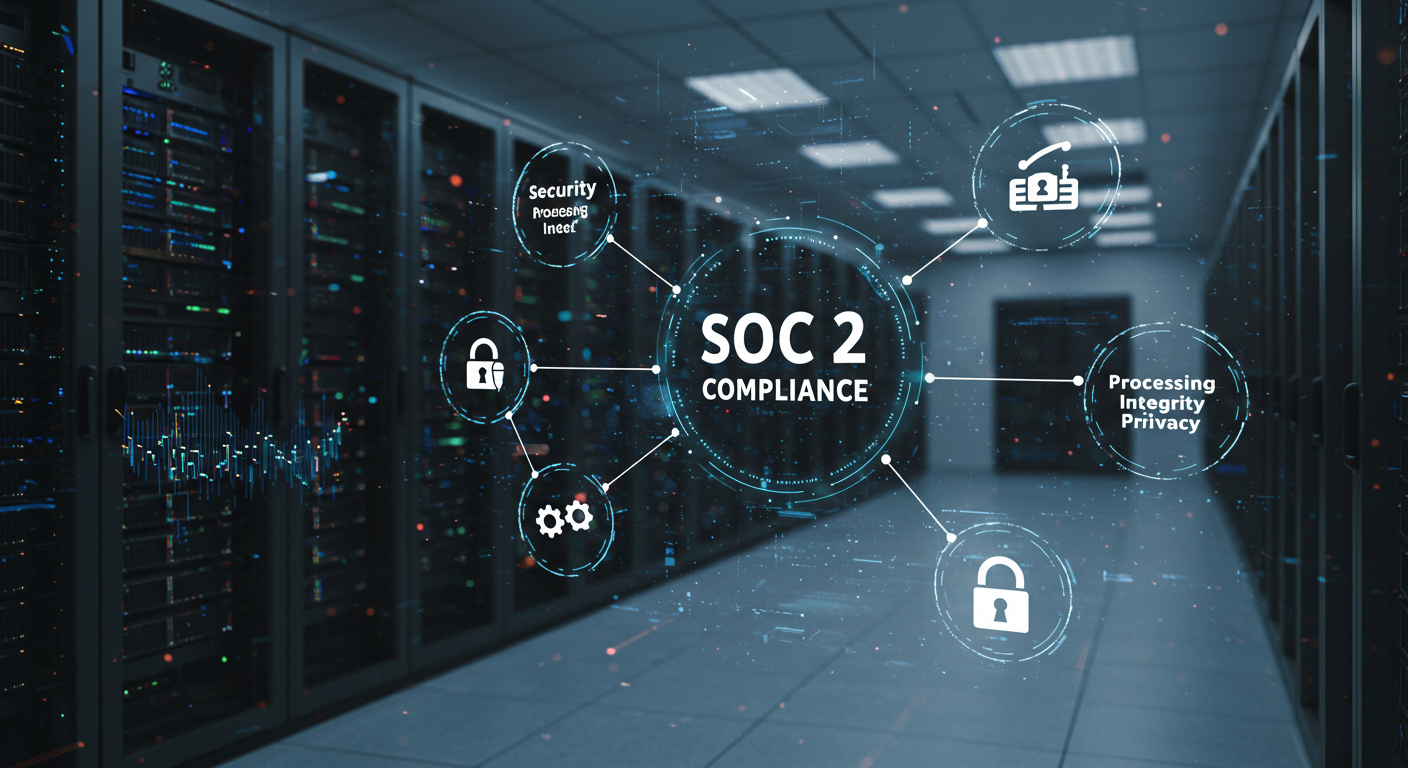In an era where data breaches and cyber threats are on the rise, achieving SOC 2 compliance has become a crucial priority for businesses handling sensitive information. SOC 2 compliance ensures that organizations adhere to rigorous standards for managing customer data, thereby building trust with clients and stakeholders. This comprehensive guide provides a detailed SOC 2 compliance checklist to help businesses protect their data and maintain robust security practices.
Understanding SOC 2 Compliance Definition and Purpose of SOC 2
SOC 2 (System and Organization Controls 2) is a framework developed by the American Institute of Certified Public Accountants (AICPA) to evaluate the effectiveness of a service organization’s controls that are relevant to security, availability, processing integrity, confidentiality, and privacy. SOC 2 reports are unique to each organization, aligning with specific business practices and security needs.
Overview of Trust Service Principles
SOC 2 compliance is based on five key trust service principles:
Security: Ensuring systems are protected against unauthorized access.
Availability: Ensuring systems are available for operation and use as committed.
Processing Integrity: Ensuring system processing is complete, valid, accurate, timely, and authorized.
Confidentiality: Protecting information designated as confidential.
Privacy: Protecting personal information in accordance with an organization’s privacy notice.
Conduct a Readiness Assessment Evaluate Current Security Posture
The first step towards SOC 2 compliance is to conduct a readiness assessment. Evaluate your current security posture by reviewing existing policies, procedures, and controls. Identify areas where your organization meets SOC 2 requirements and areas that need improvement.
Identify Gaps in Compliance
Identify any gaps in your security measures that do not align with SOC 2 trust service principles. This includes gaps in access controls, incident response, data encryption, and other critical areas.
Develop a Remediation Plan
Develop a remediation plan to address identified gaps. This plan should outline specific actions, timelines, and responsibilities for implementing necessary improvements to achieve SOC 2 compliance.
Establish Security Policies and Procedures
Develop and Document Security Policies. Create and document comprehensive security policies that cover all aspects of SOC 2 compliance. These policies should address data protection, access controls, incident response, and other key areas. Ensure that policies are clear, accessible, and regularly updated.
Implement Access Controls and Authentication Mechanisms
Implement robust access controls to restrict unauthorized access to sensitive data. Use authentication mechanisms such as multi-factor authentication (MFA) to enhance security. Define user roles and permissions based on the principle of least privilege.
Establish Incident Response Procedures
Develop incident response procedures to detect, report, and respond to security incidents. Ensure that all employees are aware of their roles and responsibilities in the event of an incident. Regularly test and update these procedures to ensure they remain effective.
Implement Technical Safeguards
Use Encryption for Data at Rest and in Transit. Encrypt sensitive data both at rest and in transit to protect it from unauthorized access. Use strong encryption protocols and ensure that encryption keys are securely managed.
Set Up Audit Trails and Logging Mechanisms
Implement audit trails and logging mechanisms to monitor access and activity on critical systems. Regularly review logs to detect and respond to suspicious activity. Ensure that logs are protected from tampering and unauthorized access.
Ensure System Monitoring and Vulnerability Management
Implement continuous system monitoring to detect and respond to potential security threats. Use vulnerability management tools to identify and remediate security vulnerabilities in your systems. Regularly update and patch software to protect against known threats.
Develop and Maintain Physical Security Measures Secure Physical Access to Data Centers and Systems
Restrict physical access to data centers and systems that store sensitive information. Use access control systems, surveillance cameras, and security personnel to protect these areas from unauthorized access.
Implement Environmental Controls
Implement environmental controls such as fire suppression systems, temperature controls, and uninterruptible power supplies (UPS) to protect physical infrastructure from environmental threats.
Ensure Proper Disposal of Sensitive Information
Develop procedures for the secure disposal of sensitive information. This includes shredding paper documents and securely deleting electronic files to prevent unauthorized recovery of data.
Train and Educate Employees
Provide Regular Training on SOC 2 Requirements and Security Best Practices
Conduct regular training sessions to educate employees on SOC 2 requirements and security best practices. Ensure that employees understand their roles in maintaining compliance and protecting sensitive data.
Conduct Security Awareness Programs
Implement ongoing security awareness programs to keep employees informed about the latest security threats and best practices. Use simulated phishing exercises and other training tools to reinforce security awareness.
Establish a Culture of Security Within the Organization
Promote a culture of security within the organization by encouraging employees to take an active role in protecting sensitive data. Recognize and reward employees who demonstrate strong security practices and contribute to the organization’s compliance efforts.
Select a Qualified SOC 2 Auditor
Choose a qualified SOC 2 auditor with experience in your industry and a deep understanding of SOC 2 requirements. The auditor will assess your organization’s controls and provide a SOC 2 report.
Prepare for the Audit Process
Prepare for the audit process by gathering documentation, conducting internal reviews, and addressing any potential issues identified during the readiness assessment. Ensure that all necessary controls are in place and functioning effectively.
Address Any Findings and Implement Improvements
Review the auditor’s findings and address any identified issues. Implement recommended improvements to strengthen your security posture and achieve SOC 2 compliance. Use the audit results to drive continuous improvement in your security practices.
Continuously Monitor and Improve Conduct Periodic Internal Audits
Conduct regular internal audits to assess your organization’s compliance with SOC 2 requirements. Use these audits to identify areas for improvement and ensure that controls remain effective.
Update Security Policies and Procedures as Needed
Regularly review and update security policies and procedures to reflect changes in regulations, technology, and business practices. Ensure that updates are communicated to all employees and incorporated into training programs.
Stay Informed About New Threats and Compliance Requirements
Stay informed about new security threats and changes in compliance requirements. Participate in industry forums, attend security conferences, and subscribe to relevant publications to keep abreast of the latest developments.
Conclusion
Achieving SOC 2 compliance is a critical step for businesses seeking to protect sensitive data and build trust with clients and stakeholders. By following this comprehensive SOC 2 compliance checklist, organizations can implement robust security measures, ensure compliance with trust service principles, and continuously improve their security posture. Prioritizing SOC 2 compliance not only enhances data protection but also demonstrates a commitment to security and integrity, fostering trust and confidence in your business. Get in touch with Bluesteel Cybersecurity.







